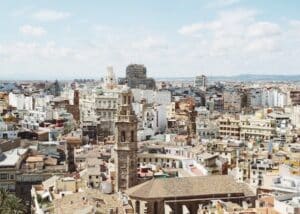Straddling the Mediterranean coast that separates Europe from North Africa, Spain is globally famous for its climate. But its gorgeous beaches and delicious culinary treats also attract millions annually. Also known as the Kingdom of Spain, the Iberian territory has been occupied for thousands of years. The Iberians and Celts often clashed with smaller cultures before the Roman Republic expanded.
But even since the earliest conquests, rulers and warriors alike recognized Spain’s geographical importance. Her soil is fertile, and the Mediterranean climate aids in crop growth. Contained in 504,030 square kilometers, it is here where you’ll find some of the best cities in Spain to live.
About Spain
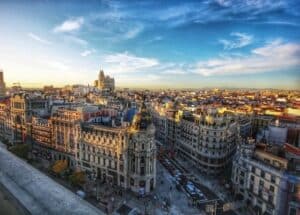
Spain’s territory also includes the beautiful Canary and Balearic Islands. Due to its unique geography, the country boasts extraordinarily diverse nature and landscapes. Whether you wish to live by the sea, in the mountains, in a beach city or in the countryside, you will find what you are looking for in most Spanish cities.
If history interests you, Spain has that in droves. The country is home to 49 UNESCO World Heritage Sites scattered across the territory. Some of which it shares with Portugal and France.
You can visit everything from ancient city walls and structures from the Middle Ages to historic churches and a Roman bridge. Spain has more than enough places to visit that will interest history buffs.
One of the most popular UNESCO World Heritage Sites is the famous La Sagrada Familia in Barcelona. Under construction for the last 140 years, it was designed by architect Antoni Gaudi. It is the largest unfinished Catholic cathedral in the world. Gaudi also designed the nearby Park Güell, which features a picturesque view of his distinctive architecture overlooking the vibrant city.
Best places to live in Spain
Spain is loved for its stunning beauty, great quality of life, rich culture, and affordable living costs. It is considered to be one of the best places for expats to live in Europe.
Every year, many international expats move to Spain’s top cities to enhance their lives. The list of the best places to live in Spain is extensive, and eventually, everything comes down to personal preferences. However, we have compiled a list of the top five cities to live in Spain for expats.
There are plenty of must-visit places, but those can become crowded quickly. Sometimes it’s best to live in one of the smaller cities that don’t attract rowdy football fans or people who want to experience the annual bulls festival. While they are more tranquil, larger cities have an advantage by being easy to explore on foot.
Naturally, bigger cities have more travelers and residents, and often a great nightlife. Here you’ll regularly find revelers enjoying the many street parties until the early hours, surrounded by beautiful architecture. If you’re unfamiliar with this juxtaposition, it can be a surreal experience. But do yourself a favor and explore as many of the other parts as you can. There is a plethora of experiences outside of Barcelona and Madrid that can’t be missed.
Madrid - Central Spain
Madrid is the best place for young adults and foreigners to live in Spain since it boasts a rich cultural heritage, variety of collages to choose from, vibrant nightlife, and a ton of people speaking the English language.
History
To see where the Spanish royalty lived, the Royal Palace is an exciting visit. Remember to pack walking shoes and some water, as there are lots to get through.
Historic neighborhoods like La Latina and the student-friendly Malasaña also offer a glimpse into Spain’s captivating past. However, you’ll also find plenty of clubs, bars, vintage clothing stores and bakeries lining the streets.
Food

Being the capital city, it is natural for Madrid to also be a hub of education and innovation. The city hosts several prestigious universities, including the Complutense University of Madrid and the Polytechnic University of Madrid, attracting students and researchers from around the world. Since so many students and researchers gather in Madrid, it offers an amazing nightlife and it’s one of the best places for young adults in Spain. On top of that, it’s a perfect place for English speakers to live in Spain, given that almost all young adults will speak the language.
Moreover, Madrid’s lively atmosphere and warm climate are major draws. With over 3,000 hours of sunshine annually, residents enjoy a Mediterranean climate that encourages outdoor activities and al fresco dining.
But, be careful, Marid has the highest cost of living in all of Spain. Everything, from apartments to food, is more expensive than in the rest of Spain.
Things to do
The city has sprawling outdoor areas, such as El Retiro Park, which provide ample green spaces for relaxation and recreation. One tourist attraction that some get wrong is thinking that the Plaza Mayor is in Madrid. It is actually in Salamanca, to the west of Madrid.
Expats find it easy to integrate in Madrid due to the warmth of Spanish people and the high number of international expats. The city has a fantastic public transportation system allowing people to navigate the city and its surroundings with ease.
For expat families with kids, Madrid has many international schools providing excellent education in several languages. In terms of job opportunities, you can definitely find employment in Madrid as it is an economic and political center.
Barcelona - Eastern Spain
Barcelona, nestled on the northeastern coast of Spain, is a Spanish city that captivates visitors. It has a unique blend of Mediterranean charm, architectural wonders, the Old Quarter, and beautiful beaches. As mentioned, Barcelona is perhaps most famous for its architectural marvels, which in itself makes it one of the most beautiful places to live in Spain.
It draws in all kinds of people because of its unprecedented beauty, art, cuisine, and nightlife. On top of that, Barcelona boasts a number of different museums, parks, and other cultural attractions that make it one of the most beautiful places to live in Spain.
Things to do
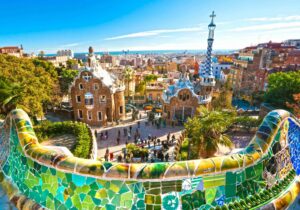
The diverse neighborhoods, from the bustling streets of the Gothic Quarter, which stretches from La Rambla to Via Laietana, and the trendy vibe of El Raval, each offer a rich tapestry of experiences.
Barcelona’s coastal location offers residents the opportunity to enjoy the Mediterranean lifestyle. Miles of sandy beaches provide a haven for relaxation and water sports, and the city’s coastal promenade, La Rambla, is a lively hub for strolling, shopping, and dining by the sea.
Getting around
Barcelona’s transportation system is efficient and well-connected, as is the case with most Spanish cities. The extensive metro network, buses, and trams make it easy to get around the city, and the El Prat International Airport provides excellent connectivity for both leisure and business travel.
The Catalonian spirit and strong sense of identity contribute to a unique cultural experience. Where 90 percent of Spain speaks Castillian Spanish, Barcelona and the rest of the autonomous community of Catalonia speak Catalan.
Valencia - Eastern Spain
Valencia is always in the top 10 places to live in Spain because it has amazing healthcare system, low crime rates, and an open-minded community that is used to expats and young adults studying there. As with most popular cities in Spain, climate in Valencia is marked with an abundance of sunshine almost year-round. Culturally, the city is a hotspot for travelers looking for the thrill of Valencia’s rich cultural heritage.
Things to do
The city is home to stunning architecture, including the futuristic City of Arts and Science Museum. But there are also a few UNESCO World Heritage Sites, such as the Baroque Basilica Our Lady of the Forsaken and the Lonja de la Seda, a historic Silk Exchange.
Food
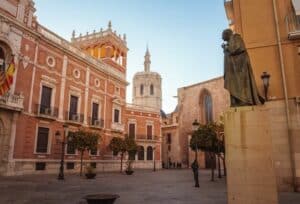
While a bigger city such as Madrid or Barcelona is all about the hustle and bustle, Valencia should be a highlight on your next trip if you are looking for a somewhat slower pace in a lovely and walkable city with many cycling lanes. You will find that living in Valencia is more tranquil and relaxing than living in Madrid and Barcelona.
Malaga - Southcoast Spain
The gorgeous Malaga, situated on the Costa del Sol in the Andalusia region, has quickly become one of the must-visit Spanish cities. Like almost any other Spanish city, it has stunning weather all year long and has a typical southern Spain pace of living: Life is relaxed, most activities happen outdoors, and people are very warm and friendly. This makes Malaga one of the best places to live in Spain for families, no matter how small or big they might be.
Things to do

Culturally, Malaga is a treasure trove and one of the best cities to immerse yourself in. Picasso might have lived in Barcelona, but he was born in Malaga, and you simply can’t visit the Spanish city without going to The Picasso Museum.
If military historical sites attract your attention, the interesting history of the Alcazaba fortress makes it unbelievable to think that Malaga was once a walled city.
Food
As with most interesting cities, Malaga is also known for its excellent gastronomy. With a diverse array of tapas bars, seafood restaurants, and traditional eateries, visitors can indulge in a wide variety of foods. The city’s bustling markets, like Atarazanas Market, offer fresh produce, local delicacies, and a vibrant atmosphere.
For those seeking education, Malaga is home to several reputable universities and educational institutions. This includes the University of Malaga, which offers a range of academic programs.
Seville - Southern Spain
Considered the most romantic city in Spain, Seville is located right in the heart of Andalusia. Famous for its charm and slow pace of living, Seville’s streets are filled with beauty and the resonating notes of Flamenco songs. The city has incredible weather, and you will be able to eat Seville’s delicious cuisine sitting on terraces most of the year. It’s also one of the cheapest major cities to buy property in Spain.
Things to do
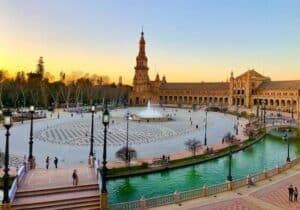
The cost of living in Seville is low, the rentals are cheap compared to the rest of Spain, and you can find fantastic real estate opportunities.
While there are many starting points of the famous Camino de Santiago, Spain’s southernmost point starts in Seville.
The cobbled streets snake through this beautiful city, where you can catch a glimpse of the Catedral de Sevilla, and take you through other cities to eventually end at the world-famous Santiago de Compostela, one of the best cities in Spain for religious pilgrims.
It is believed that St. James, one of the apostles of Jesus Christ, is buried in the Santiago de Compostela. It’s not the largest Gothic cathedral, but it’s certainly impressive. It’s one of the major reasons why people visit Spain.
Best cities in Spain to visit
It’s a daunting task to compile a list of the best cities in Spain. There are so many wonderful locations to include, from a small city on the French border and the beautiful region of the Sierra Nevada mountains to the Basque country in northern Spain.
However, traveling about an hour southwest of Spain’s capital, you’ll arrive in Toledo with its gorgeous Plaza de Zocodover. The same goes for Barcelona. If you travel further north along the coast, you’ll get to Costa Brava. There you’ll find beautiful beaches at the foot of the Pyrenees mountains.
In the Basque country, the port city of Bilbao is where you’ll find modern architecture interspersed with cobblestone streets, making it an interesting visit.
North of Malaga is Córdoba, a city famous for the ruins of Medina Azahara palace and Alcazar of the Christian Monarchs.
But whether you know a Spanish city like the back of your hand or it is your first visit in Spain, don’t mark Plaza de España as a location for directions. Also spelled as Plaza de Espana, almost every city has a plaza by that name, and while, in most cases, it ranks as one of the tourist places to visit, you could find yourself driving in circles.
How to live permanently in Spain
Several visa options are available for expats seeking to live permanently in Spain: The tourist visa, retirement visa, work visa, self-employment visa, Non-lucrative Visa, Investor Visa (Spain Golden Visa). These visas can potentially lead to permanent residency, provided you continue to meet the visa requirements.
Favored by many non-European citizens, the Spain Golden Visa gives investors and their families the incredible opportunity to reside in Spain. This is in exchange for an investment in the country’s economy. It is also an efficient way to acquire a Spanish passport, allowing visa-free travel to 174 countries and unlimited access to the Schengen Area.
The Spanish Golden Visa was launched in 2013 as part of the national strategy to boost the Spanish economy and increase foreign investment. Also known as the Investor Visa, Spain’s Golden Visa is a residency by investment program offering non-EU citizens legal residence in Spain in exchange for financial investment.
It is not a direct route to obtain Spanish citizenship. However, after acquiring a Golden Visa and spending ten years as a Spanish resident, you could be eligible for citizenship.
The Spanish Investor Visa program grants qualifying individuals a renewable, temporary residence permit in exchange for an investment in the country.
Individuals can either purchase real estate or invest in Spanish companies. There is also a path if you create employment opportunities or make a qualifying contribution to government bonds.
A key advantage of the Spanish Golden Visa is that the government legislation does not impose a minimum period of residence.
Qualifying applicants and their family members who meet the program’s requirements and invest at least €500,000 in real estate, or at least €1 million in a business, government bonds, or otherwise, are offered an easy and quick way to a residence permit.
The initial residence permit is granted for one or two years if you visit Spain. This can then be renewed every three years. You can obtain permanent residency after you’ve been domiciled in the country for five years. Please note that applicants will be required to visit Spain to submit their biometric data.
It is not necessary to live in Spain in order to obtain and renew residence permits. However, the pathway to citizenship requires the investor and family to live in Spain for at least six months per year. This must be for ten consecutive years.
Buying property in Spain

The Spanish property market has gone through a bit of a slowdown lately. Real estate agents made fewer sales in 2023 when compared to the previous year, it is still better than 2019. However, it does come with a caveat. Foreign buyers shouldn’t expect to snap up a property in Spain for pennies on the dollar. There are fewer property owners willing to sell.
But that’s not to say the Spanish property market is a terrible investment at the moment. To the contrary, property has been (and always will be) an excellent investment – no matter which country you are in. You won’t have to search far to find a real estate agent with some amazing new properties for foreign buyers.
With Spain’s high quality of life, incredible culture, diversity, and delicious cuisine, it’s no wonder why a high number of foreigners are drawn to Spanish real estate. In fact, foreigners account for around 20 percent of Spain’s real estate market buyers.
Buying property in Spain can give you the incredible opportunity to receive Spanish residency, ultimately allowing you to get a Spanish passport. Launched in 2013, the Spain Golden Visa program allows investors and their families to receive Spanish residency in exchange for an investment in real estate of a minimum value of €500,000.
Spain in Pictures

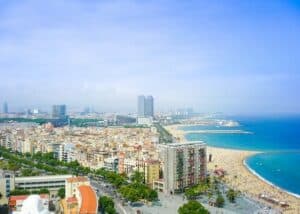

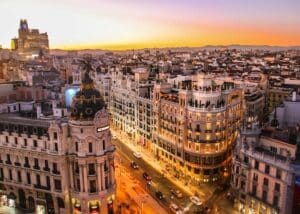
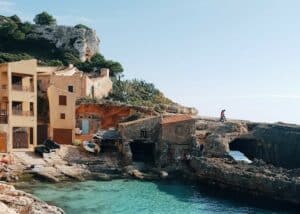
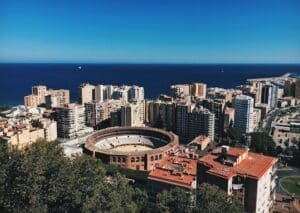
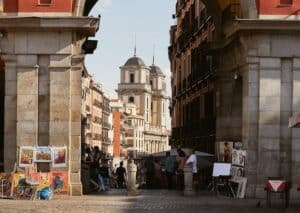
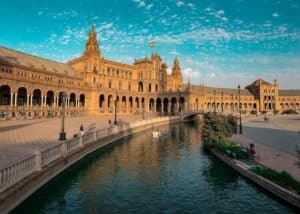
Frequently Asked Questions about the best places to live in Spain
What is the best city to live in Spain?
Choosing the best city to live in Spain depends on personal preferences, but some consistently highlighted as beautiful cities include Madrid, Barcelona, and Valencia. Madrid is famous for its Plaza Mayor, a grand square surrounded by historic buildings. Barcelona, known for its unique architectural styles and the Ciudad de las Artes, offers a blend of modern and traditional experiences. Valencia, with its old town and proximity to the Costa Brava, presents a laid-back lifestyle combined with rich cultural experiences.
What are the best places by the sea?
For living by the sea, places like the Costa Brava and San Sebastián are excellent choices. Costa Brava, known for its rugged coastline and medieval towns, offers a serene lifestyle. San Sebastián, famous for its Basque culture and delicious tapas, is a culinary paradise. Both places provide a high quality of life with their stunning beaches and vibrant local cultures. Naturally, these cities make up for the best places for families in Spain.
What are the best cities for families?
For families, cities offering a combination of good education, safety, and cultural activities are ideal. Madrid, with its numerous parks and the Museo del Prado, Valencia’s Ciudad de las Artes, and Málaga’s blend of grand buildings and beaches offer diverse environments for families to thrive.
How can I get a Spanish passport?
Obtaining a Spanish passport as an expatriate can be achieved through various means, one of which is the Spain Golden Visa program. This program requires an investment in Spain’s economy, and upon fulfilling certain conditions, you can obtain a passport. This process allows expatriates to enjoy the benefits of living in Spain’s cities, each with its own unique charm and cultural richness.
Where is the best place for English speakers?
For English speakers, cities with large international communities like Barcelona and Madrid are ideal. These cities offer extensive cultural offerings and are well-connected by high-speed train, making day trips to other destinations like the Roman ruins in Castilla La Mancha or the snow-capped mountains in the north easily accessible.
What makes Granada unique?
Granada is unique for its incredible Alhambra, a UNESCO World Heritage site that attracts most visitors. Its blend of Moorish and Spanish cultures, along with the beautiful city views from the Mirador del Valle, makes it a must-visit. The city’s rich history, exemplified by the Alcázar de Segovia, and vibrant street life, including flamenco dancing and delicious tapas, contribute to its appeal.
What are some must-visit places?
For tourists, places like Seville with its old castle, Madrid’s Museo del Prado, and Jerez de la Frontera, known for its Rioja wine, are essential visits. These cities are among Spain’s most beautiful cities. The Santa Bárbara Castle in Alicante and the ancient Jewish Quarter in Seville offer glimpses into Spain’s rich history and diverse cultural heritage.
What are the best places for young adults?
Young adults often prefer cities with lively cultural scenes like Madrid, Barcelona, and San Sebastian. Madrid, with its bustling Plaza Mayor, is a hub for modern art and nightlife. Barcelona’s Guggenheim Museum and vibrant cultural offerings make it a youth-friendly city. San Sebastian is renowned for its food scene and beautiful beaches, perfect for younger crowds.
What is the safest place to live in Spain?
Rule of thumb when it comes to safety is that the smaller the town is, the safer it is. In larger towns, especially those overcrowded with tourists, the density of people is higher and the odds of you feel unsafe are higher. Therefore, it would be best to stick to smaller towns Albacete, San Sebastián, Zaragoza, and Palencia.
Generally speaking, any smaller town should make you feel safe.
Where do most foreigners live?
Foreigners often gravitate towards areas like the Costa del Sol and the Costa Blanca, known for their pleasant climates and expat communities. Cities like Madrid, Barcelona, and Valencia also have significant foreign populations due to their economic opportunities and cosmopolitan lifestyles.
What is the safest place to live in Spain?
Spain, in general, is quite safe. However, cities like Oviedo, Vitoria-Gasteiz, and Zamora often rank high in safety due to their low crime rates. It’s important to consider both petty crime and serious crime statistics when evaluating safety.
Which city has the best economy?
Madrid and Barcelona are the economic powerhouses of Spain, offering the most job opportunities and highest salaries. These cities host numerous national and international businesses, making them economic hubs.
What is the happiest city in Spain?
Happiness can be subjective, but cities like Malaga and Las Palmas de Gran Canaria often rate highly in happiness surveys due to their sunny weather, relaxed lifestyle, and friendly communities.
What are some hidden gems for travelers?
Spain is full of hidden gems beyond the usual tourist spots. Santiago de Compostela, in northwestern Spain, is a historic city known for the Camino de Santiago (Saint James) pilgrimage. Its stunning cathedral is a UNESCO World Heritage Site. For those interested in history, the Roman ruins scattered across cities like Mérida offer a glimpse into Spain’s ancient past.
Nature lovers should not miss the snow-capped mountains in the Pyrenees, providing breathtaking views and outdoor activities. In the Aragon region, lesser-known towns offer rich cultural experiences and delicious tapas, making every day trip an adventure. Ciudad de las Artes in Valencia showcases modern art and architectural styles unique to Spain.
For a relaxing Spain vacation, consider visiting La Rioja for its serene landscapes and famous Rioja wine.
Can you recommend some cultural places?
Spain is a treasure trove of cultural and historical sites. In Cordoba, the Great Mosque-Cathedral is an architectural marvel, while the Jewish Quarter nearby offers a walk through history. Seville’s Alcázar de Segovia and the Santa Bárbara Castle in Alicante are examples of magnificent old castles.
For art enthusiasts, Madrid’s Museo del Prado and Guggenheim Museum in Bilbao are essential visits, housing extensive collections of fine art. The National Museum in Barcelona and the Egyptian temple in Madrid provide unique cultural experiences.
For a more leisurely experience, enjoy the peak summer months in coastal cities like Malaga, where the blend of beaches, cocktail bars, and vibrant streets are a delight. Don’t miss the hanging houses of Cuenca, a sight to behold. Spain travelers often find themselves enchanted by the diverse range of experiences, from the old town areas in most popular Spain cities to the peaceful snow-capped mountains and orange trees in other Spanish cities.
What are the most affordable places to live in Spain for digital nomads?
Digital nomads are always on the hunt for the cheapest places to live while enjoying the culture (and avoiding tourist crowds) of the most vibrant cities. Your digital nomad visa in Spainwill last you a year, but you can extend its duration by up to three years.
The first, and most important factor you should be looking at is average rental prices. Granada and Valencia are great options. Not only do they have access to the Mediterranean coast, but they offer a thriving social scene and good weather.
But, if you’re really looking to live at a relaxed pace, consider moving to Spanish villages where you could have an amazing quality of life. In this case you opt for that, you should definitely speak Spanish because locals probably won’t speak English.


